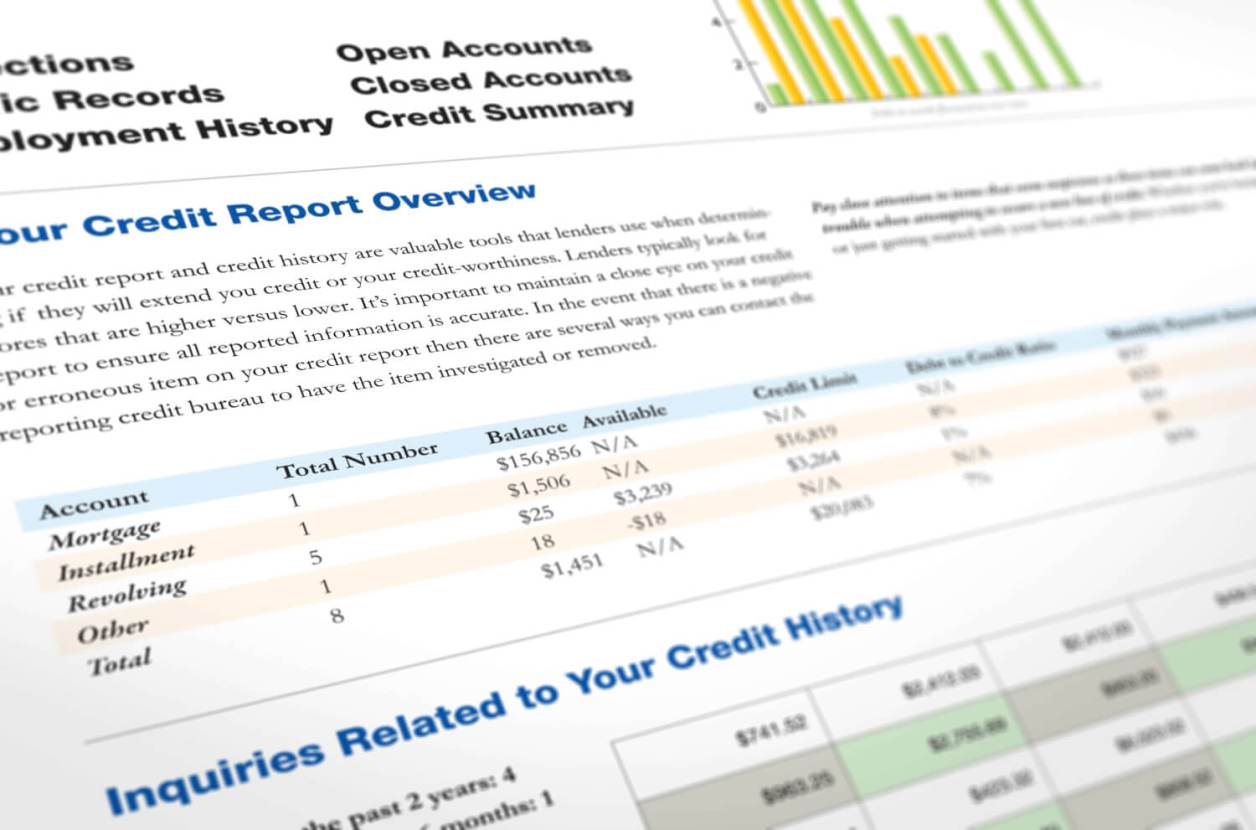If you’ve got a late payment dragging down your credit score—but the account is otherwise in good standing—a goodwill letter could help you get it removed. It’s a simple, polite request to your creditor asking them to forgive a past mistake and update the way the account shows up on your credit report.

Goodwill letters don’t always work, but when they do, they can lead to a quick bump in your credit score—especially if the late payment is the only negative mark on your report. And since there’s no cost and no real downside, it’s worth trying if you’re hoping to clean things up before applying for a mortgage, auto loan, or credit card.
This guide explains when to send a goodwill letter, how to write one, and what to say to give yourself the best shot at success. We’ve also included a free template you can copy and customize.
What is a goodwill letter?
A goodwill letter is a written request you send to a creditor, asking them to remove a negative mark—like a late payment—from your credit report. You’re not disputing the accuracy of the item. You’re simply explaining what happened, taking responsibility, and asking for a little grace.
This only works if the account is in good standing now and hasn’t been sent to collections. It’s most effective when you’ve generally made on-time payments and the issue was a one-time slip due to something like a job loss, illness, or technical glitch.
Some people confuse goodwill letters with requests to change their loan terms. That’s not what this is. A goodwill letter is only about your credit report. You’re asking the lender to contact the credit bureaus and have them update how that account is being reported.
Lenders aren’t required to grant these requests, and not all of them will. But if you’ve been a reliable customer and the issue is behind you, some may be willing to help.
Ready to Clean Up Your Credit Report?
Learn how credit repair professionals can assist you in disputing inaccuracies on your credit report.

Do goodwill letters still work?
Yes, they can—especially when the late payment was a one-time issue, and you’ve since kept the account current. Many people have successfully used goodwill letters to get late payments removed from their credit reports, and in some cases, it made a noticeable difference in their credit score.
There’s no guarantee it will work, but if your account is in good standing, and you’ve had a solid payment history overall, it’s worth a shot. The process costs nothing but a little time, and in the best-case scenario, it helps you qualify for better rates on loans or credit cards.
Why Some Lenders Say No
Not every lender is open to goodwill adjustments. Some have a strict policy of reporting all credit activity accurately, no matter the circumstances.
For example, Bank of America states on its website that it’s “required to report complete and accurate information,” and it does not consider goodwill requests. Other major banks may take the same approach.
That said, some smaller lenders, credit unions, or even individual representatives may be more flexible—especially if you’ve built a good track record with them. It really depends on the company and the person reviewing your request.
When to Use a Goodwill Letter
A goodwill letter works best when the late payment was a rare mistake—not part of a larger pattern. You’re more likely to get a positive response if your account is now current and you’ve been reliable overall.
Here are some common situations where a goodwill request makes sense:
- Technical Issues:
- Autopay didn’t process correctly
- A check took longer to deposit than expected
- The creditor’s website or phone system was down when you tried to pay
- Life Events:
- Job loss or temporary income disruption
- Divorce or separation
- Illness or hospitalization (either you or a family member)
- A recent move caused you to miss a bill or not receive a statement
- Otherwise Good History:
- You’ve been a long-time customer with an overall solid payment record
- The late payment was a one-time mistake and hasn’t happened again
Even if your reason doesn’t fall into one of these categories, it doesn’t hurt to ask. Creditors understand that life happens—and some may be willing to work with you.
Tips for Writing an Effective Goodwill Letter
If you want your goodwill letter to stand out, keep it short, sincere, and specific. The person reading it is more likely to help if you make their job easy and give them a reason to say yes.
Here’s what to include:
- Be honest and take responsibility: Own the late payment. Don’t make excuses or shift blame. Just explain what happened.
- Explain what happened clearly but briefly: One or two sentences is enough. Stick to the facts.
- Mention your history as a good customer: If you’ve had the account for years or rarely miss payments, say so.
- Share why this matters now: If you’re applying for a mortgage, refinancing, or trying to qualify for better rates, mention it.
- Be respectful and professional: Say thank you, acknowledge the lender’s role, and keep the tone courteous.
You don’t need to over-explain. The goal is to show that you’re responsible, the late payment was an exception, and you’re asking for a little help to move forward.
Goodwill Letter Template
Note: This goodwill letter template does not have to be used for a credit card issuer. You can use it for any negative credit accounts on your credit report. However, you may want to dispute the account with the credit bureaus before attempting a goodwill letter.
{Date}
{Creditor Name}
Attn: Customer Service
{Creditor Address}
Re: {Account Number}
To Whom It May Concern,
I’m writing to ask if you would consider removing a late payment from my credit report for the account listed above.
I’ve had this account since {date} and have worked hard to stay on top of my payments. Unfortunately, in {month/year}, I missed a payment due to {brief explanation—job loss, medical issue, banking error, etc.}. It was an isolated situation, and I’ve made every payment on time since then.
I’m currently trying to {ex: apply for a mortgage, refinance my car, qualify for better rates}, and that one late payment is holding me back. I understand you’re required to report accurate information, but I’m hoping you might make an exception as a goodwill gesture.
I appreciate the opportunity to be your customer and hope you’ll consider this request. If there’s anything you need from me to support the review, I’d be happy to provide it.
Thank you for your time and consideration.
Sincerely,
{Your Full Name}
{Address}
{Phone Number}
{Email}
What makes a convincing goodwill letter?
When receiving a goodwill letter, your creditor will consider how long you’ve been a customer. Your chances are better if you have a long relationship and have generally made payments on time. However, it may not be as easy for new customers or someone who has multiple late payments.
You’re also more likely to have the late payment removed from your credit report if it happened a while ago. That’s because you’ve had time to prove that it was just a one-time occurrence rather than an ongoing financial issue.
If you’ve already requested a goodwill adjustment from the same creditor, particularly within the last two years, they’re less likely to remove the late payment.
It’s essential to get the lender’s attention by crafting an emotional plea. You need to make your goodwill letter as compelling as possible to get them to take favorable action.
When a Goodwill Letter Isn’t Enough
A goodwill letter can help fix a single late payment, but if your credit report has deeper issues—like collections, charge-offs, or multiple delinquencies—you’ll likely need a more complete strategy to get back on track.
Here are your next steps:
- Hire a trusted credit repair company: If you don’t want to handle disputes on your own, a top-rated credit repair service can do the heavy lifting for you. Credit Saint is one of the most established companies in the industry, with a strong track record of helping people remove negative items and improve their credit scores.
- Dispute items yourself: If the negative marks are inaccurate or outdated, you can file disputes with the credit bureaus directly. It’s free to do—but you’ll need to be organized and persistent.
- Rebuild with new credit: Tools like secured credit cards or credit builder loans can help you add positive payment history, even if your credit score is currently low.
A goodwill letter is just one piece of the puzzle. Whether you go the DIY credit repair route or work with a professional, the key is to act sooner rather than later—so you can start rebuilding your credit score and move forward with confidence.
Final Thoughts
A goodwill letter won’t fix everything, but in the right situation, it can be a simple way to remove a late payment and boost your credit score. If you’ve got a solid history with your lender and the account is current, it’s absolutely worth trying.
Keep your letter short, honest, and polite. Focus on what happened, what’s changed, and why removing that mark matters now. And if it doesn’t work? You’ve still got plenty of other ways to rebuild your credit and move forward.
Need more help cleaning up your credit report? Check out our top-rated credit repair services or explore our DIY credit repair guide for step-by-step support.
Frequently Asked Questions
Can I send a goodwill letter by email instead of mail?
Yes, some creditors may accept goodwill requests by email, especially smaller banks or credit unions. However, sending your letter by certified mail gives you proof that it was received, which can be helpful if you need to follow up later.
Can I call instead of writing a goodwill letter?
Yes, but it’s best to follow up the call with a written request. A phone call might get your foot in the door or help you find the right person to address the letter to, but you’ll still want to send something in writing for their records.
Should I include supporting documents with my goodwill letter?
You can, but only if they add value. For example, if you’re referencing a medical emergency, job loss, or technical issue, include brief documentation that backs up your explanation. Just don’t overload the letter—keep your request simple and focused.
What happens if the lender denies my request?
If the lender denies your request, you may need to look into other options. Depending on the situation, you may be able to challenge the late payment with the credit bureaus by writing a dispute letter. However, credit dispute letters are typically used to dispute negative items that are inaccurate.
How often can I send a goodwill letter?
You can try more than once, but don’t overdo it. If your first request is denied, wait at least a few months before trying again. In the meantime, continue making on-time payments to strengthen your case.
Will a goodwill letter help if my account is still past due?
No. Goodwill letters only work when the account is current and in good standing. If you’re still behind on payments, focus on catching up first—then you can ask for a goodwill adjustment down the line.



